With a brand new sofa in the house comes a sense of comfort - because it is big, soft and created for a comfortable stay. But when it's time to choose a new "tenant", eyes run from the variety of furniture in the salons. I want to buy three at once and another one - in a little corner. Do not get lost and buy the very sofa that you need, our advice will help. Consider all the basic elements and capabilities of modern models, and at the same time we estimate how much the purchase will cost.
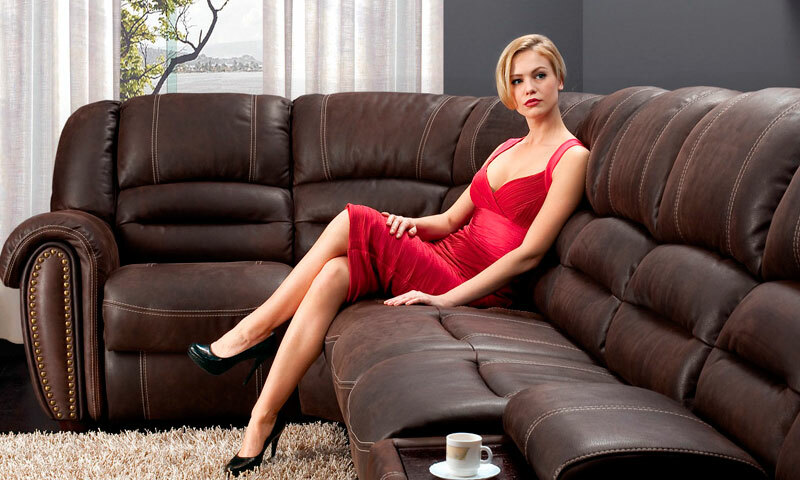
Contents:
- The best manufacturers of sofas
- The design of different sofas
- Types of sofas
- Selection parameters
- Which sofa to choose
- How much are the sofas
The best manufacturers of sofas
If you are looking for beautiful and durable furniture, pay attention to the products of the following brands:
- Rival
- Anderssen
- Bellus
Quickly find a good model in the rulers of these manufacturers, our rating of the best sofas for the home will help you. The rest of those who want to find their own nuances and buy the perfect sofa, it's time to get comfortable - we will study the subtleties of the choice of upholstered furniture.
The arrangement of various sofas
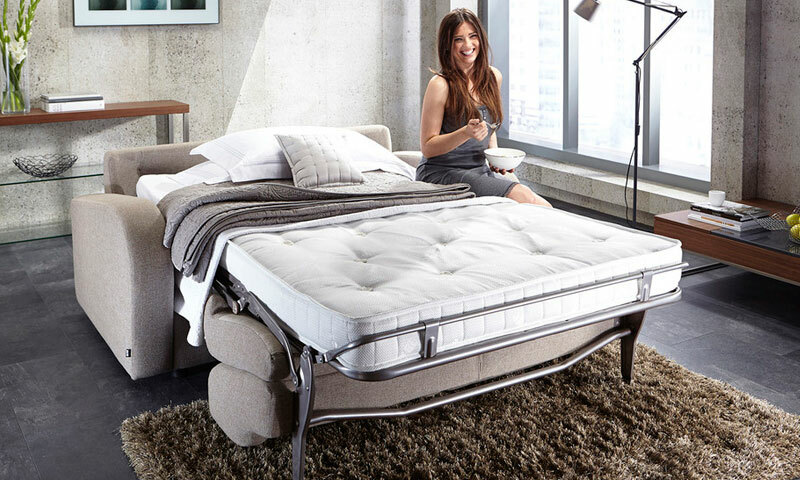
A sofa can be not only a cozy corner for family rest, but also at the same time serve as a bed or additional storage space for things. But the product is simple and regardless of the configuration consists of only a few basic parts:
- The frame is the basis of furniture, assuming all the loads.
- Soft elements - these include seats, backrests, armrests and headrests.
- Upholstery - it depends not only on the appearance of the sofa, but also how long it will retain its beauty.
In the sofas-transformers, the folding mechanism is an equally important part. This is a system of levers, hinges and hinges that allow you to turn soft furniture into a full sleeper. There are a lot of such mechanisms invented and each of them works in its own way:
1. Book - decomposes using fixed loops. It is enough to raise the seat by 90 °, "filling up" the back, and when you hear a click, put it back into place. Similarly, the click-clap mechanism works, but it still has a stopper in the intermediate position of reclining.
2. Evroknizhka - here there is only a backrest, and the seat extends forward, releasing a place for it.
3. Puma - the backrest remains stationary, the seat along the arc extends forward and pulls the hidden soft block behind it.
4. The accordion consists of a series of connected elements: a seat and a double backrest. Pulling the pillow forward, you pull and the other sections - as if stretching the fur.
5. Withdrawable - here already a double cushion lies on the seat. To expand such a sofa, you need to roll out the lower "shelf" and fold half of the folding mattress. The same principle of transformation is realized in couches-telescopes, only the soft seat leaves together with the movable block on the guides and leans back.
6. Clamshell( American, French) - under the seat of this sofa hides a real three-section clamshell with a soft segmented mattress and folding legs.
7. Verona and Dolphin are another variation on the clamshell theme, this time hidden in a drawer. In the first case, it has two sections, in the second only one - the additional pillow is simply pulled out by the loop upward and placed on the slats.
8. Lit is not exactly a full-fledged transformer, since only the armrests are laid out here. Thanks to them, the length of the berth increases, but not the breadth.
There are many different systems for laying out sofas( pantograph, tick-tak, Meralat, Aleko, etc.), but their operating principles are only a combination of the schemes considered.
Types of sofas
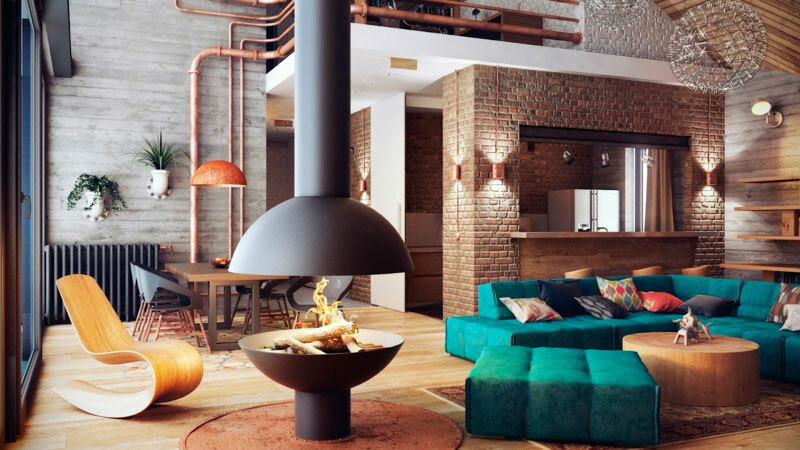
The division of sofas into views is based on their design, and more often on the form. And each of the presented families can be supplemented by a transformation mechanism that makes the furniture more functional, but does not change its appearance.
Straight
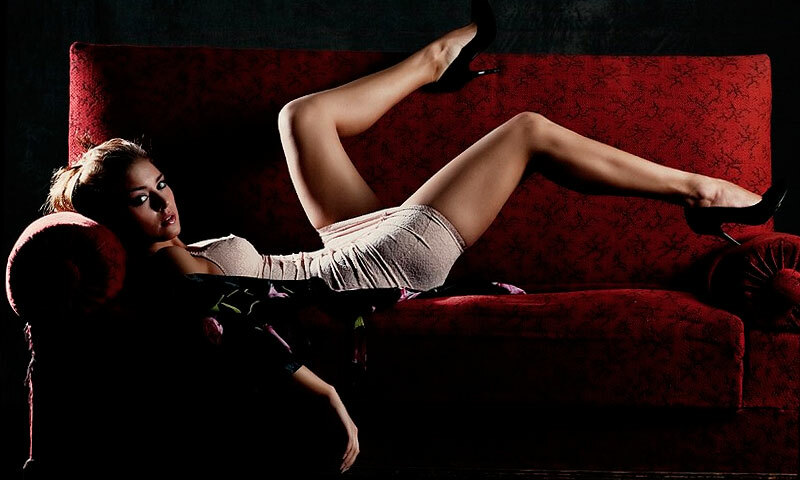
The simplest version is a stretched sofa for 2-4 seats, located in one line. The seat can be a set of pillows( by the number of seated) or be solid. The second option is preferable for folding models.
Pros:
- Simple and reliable design;
- Does not take up much space in the room;
- You can put it against the wall or in the center of the room - for zoning;
- Convenient to use as a bed for one;
- The design allows you to implement any type of transformation.
Cons:
- The complexity of transportation - usually with such couches there is nothing to remove;
- Uncomfortable look at the interlocutor;
- Sitting on the edges of a too long sofa can not reach, for example, to a coffee table.
Straight sofas are ideal for "spectators" and "waiting."This model can be put at home in the TV zone or used in the office. The most compact specimens are freely placed near a short wall in a small room( in a hall, on a loggia) or in the center of a spacious room, dividing it into semantic zones.
Corner

Compared to direct models, these designs look cumbersome, although in fact the L-shaped form allows you to place the maximum number of people in a small area. Angular sofas can have the same length of the wings, although more often one of them is shorter than the other and is designed for only one seat. There are right and left asymmetric models, but most manufacturers offer collapsible options with the possibility to reorient furniture in the right direction.
Pros:
- Capacity, including due to an additional corner seat;
- Convenient form for communicating seated;
- Dismountable design for easy transport.
Cons:
- Overall;
- The design is not integral, and over time, the module connections can loosen.
Corner sofas should be chosen in cases where the furniture requires maximum capacity. This applies to apartments where a large family( at least 4 people) and public places live.
Compact L-shaped models found their place in small kitchens, where all households at the same time gather at the table. This design allows you to leave a maximum of free space in the center for a dining table, but freely fits all family members. Kitchen corners are allocated in a separate group of upholstered furniture, as they have relatively high and shallow seats.
Selection parameters
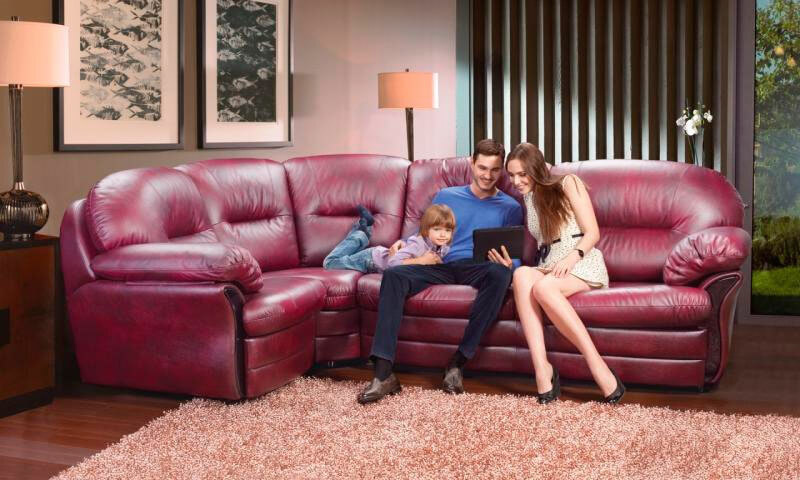
Dimensions
Having defined the shape of the sofa, you can go to the details. First, decide how big a new furniture should be. Here everything is very individual and depends on the layout of the room, but there are several rules that should be observed:
- Dimensions of the sofa are selected in accordance with the size of the room. In the spacious living room you need furniture that does not get lost in a large area. And in a tiny kitchen or in the hallway, the sofa should not take up too much space or block the passage.
- For transformers, you need to take into account also the dimensions in the unfolded position.
- The sofa should pass in the doorway - many people simply forget about it at the time of purchase.
- Models that will be used instead of beds, come with a long main section - not less than 180-200 cm without armrests.
- Before buying a kitchen sofa, you need to measure the height of the dining table. It is desirable that the distance from the seat to the table top is 30( ± 5) cm.
When choosing, it is also desirable to focus on the composition of the family. If you often receive guests, count the number of adults in the house and add to them at least 2-3 seats - this will be the optimum capacity of the sofa.
Materials for the manufacture of
The strength and durability of the entire structure is determined by the frame material. Ideally if it is a natural array( beech, birch, in extreme cases, spruce or pine) or metal tubes. Furniture that is not used very actively can be supplemented or entirely made of plywood, MDF and chipboard. This solution is suitable for kitchen corners or compact sofas in the hallway, but in the nursery from such materials it is better to refuse, because they are not absolutely safe and eco-friendly.
Next stage is stuffing. The best filler for the soft elements of the sofa is the PUF, since it is durable and able to withstand high loads while maintaining the original volume. In the budgetary series of furniture, foam rubber is still used, but it quickly loses its shape and after 5-7 years it crumbles into dust.
Upholstery materials are chosen not only on the principle of "like - not like", but also taking into account the features of the operation of the sofa. The fabric should be waterproof if it is necessary to clean often, or breathing - if the household sit on the couch for hours. For furniture that is used most intensively, it is important to lack a long pile on the upholstery: if it falls in a year, the sofa will look sloppy.
Which sofa to choose
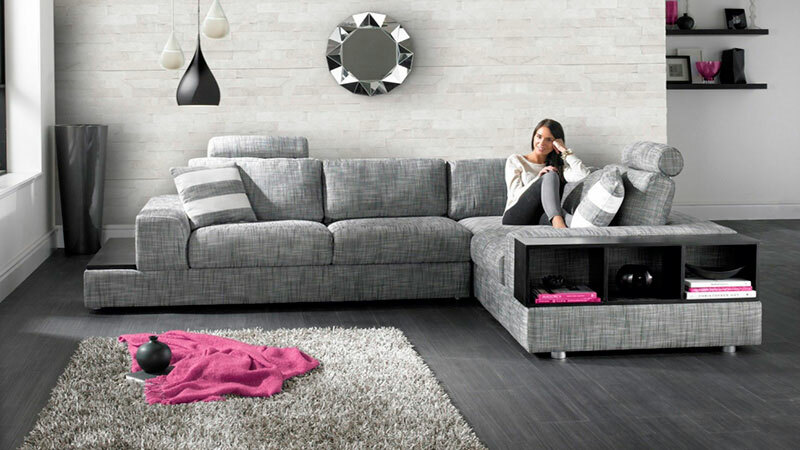
Here it is necessary to start from the appointment of a sofa and a room where you plan to "lodge" it. Each room has its own requirements for upholstered furniture, because the functions are assigned to it differently:
To the living room
For a rest area, it is better to choose a large corner model with high backs and armrests, as well as soft and deep seats. The frame is wooden, it is possible with extensions of pressed plates. Upholstery material should be ordered to your taste, but it's better to have natural and breathable fabrics like flax, cotton or wool, preferably with synthetic threads. You can use plush, velor, flock or velvet.
In the TV-zone it is better to put a direct sofa for 2-3 seats. The frame can be any, but the metal allows manufacturers to make furniture more compact. Mildness of pillows owners can choose to your taste, as well as the height of the back. But the material is better to take a tight and easily cleaned from stains - very few people watch TV without a plate of delicious and favorite drinks. Suitable real leather or any of its substitute, from the fabrics can advise polyester and acrylic.
In the nursery
The child needs a compact and bright sofa, completely made of safe materials: a wooden massif and hypoallergenic lint-free fabrics( linen, cotton, chenille).For good quality it is necessary to pay - children's furniture is better to search among the goods of known and not cheap brands. Also it is worth paying attention to the shape and features of the sofa decor: there should be no bulging corners and hard edges, which the child can be injured during games.
In the kitchen
For the dining area, look for special kitchen corners with high seats( 50 cm from the floor) and not too soft cushions. The frame should preferably be metallic - chrome plated, painted or stainless steel. A tree is allowed, but it will require careful care. It is better that they are moisture-resistant varieties like oak or larch, although such furniture is made only to order.
Many families are completely dispensed with sets of chipboard or laminated MDF boards. If you are ready in 5 years to completely change the soft headset, this approach is justified. Just look for a sofa with high cuts on the legs and carefully sealed edges - the floor in the kitchen is washed often, and when water seeps into the thickness of the plate, the press swells and quickly deteriorates. In a small room immediately take a sofa with inner boxes or drawers under the seats. They can store utensils and cereals, completely unloading the entire cabinet in the work area.
Before buying a kitchen sofa, ask about the characteristics of the upholstery. It should be waterproof, do not accumulate odors and easily cleaned of contaminants. With this task, eco-leather, microfiber, most synthetic fabrics will do well, and spots on the colorful and strong tapestry will not be visible at all. You can buy a model with linen or cotton upholstery, if the fabric is treated with water-repellent impregnation.
Cost of sofas

1. The corner model for a drawing room from some "national" producer will cost 12-25 thousand rubles. In well-known brands, the order of numbers on the price tags is different - from 100 to 200 thousand.
2. Direct models are slightly cheaper: 5-20 thousand rubles in the lower price segment and from 50,000 in the premium segment.
3. The prices for transforming structures are usually 15-50% higher than for non-spreading analogues.
4. A good quality children's sofa you will find in the segment from 15 to 35 thousand rubles.
5. A simple kitchen corner can be bought for 3-8 thousand, chic models already have a price tag from 20,000 to 40,000.
